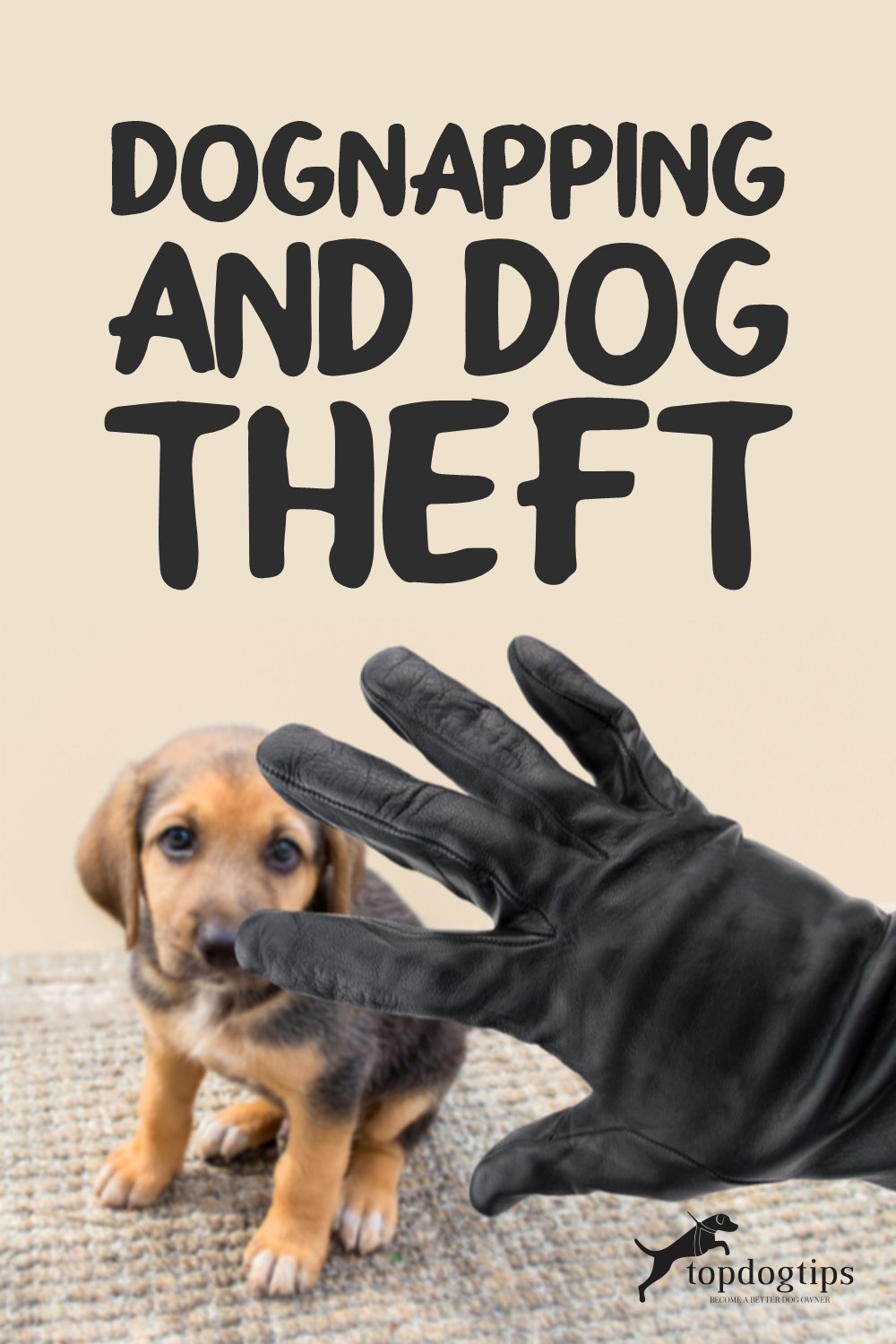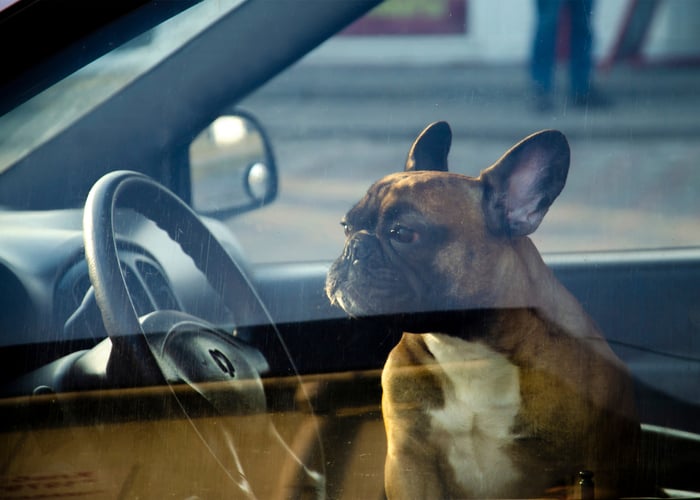Three months ago, a violent dognapping crime in Hollywood made headlines.
A dog walker was shot, and the French dogs owned by famous pop star Lady Gaga named Koji and Gustav were stolen.
Fortunately, the dogs have returned safely, and the walker has recovered.

While dog theft and dognapping rarely become this violent, the sad reality is that these crimes are currently increasing.
And of 2 million domestic animals stolen, only 10% were able to return to their parents.
If you’re a dog owner, it is crucial to be aware of this dognapping trend.
So, today, we’ll take you into the dognapping world and share with you some clever ways to outdo burglars and dog thieves.
So, if you want to:
- Understand dognapping and dog theft and how prevalent it is
- Know what breeds are the typical victim of these crimes
- And learn some actionable tips on how to protect your dog
You’ll love today's article. So, without further ado, let’s uncover this dognapping issue right away.
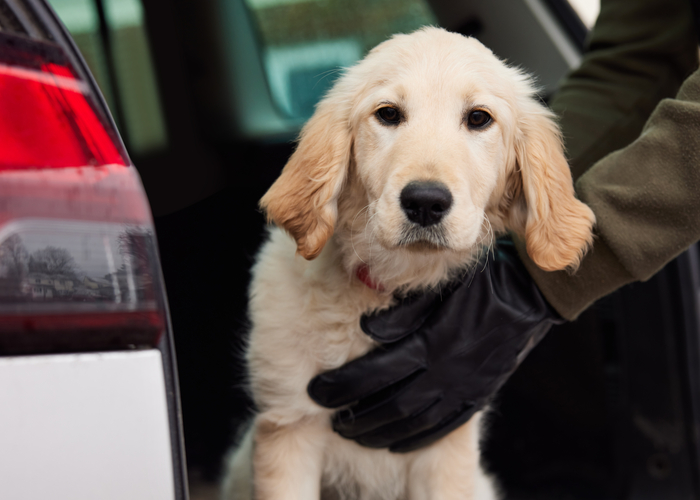
What are Dognapping and Dog Theft?
Dognapping is derived from the word kidnapping, which refers to the crime of taking a dog without the owner’s consent.
But in most states, dogs are considered properties, so stealing a dog from the owners doesn’t lead to a kidnapping claim.
Instead, the crime would be usually considered theft or grand theft, depending on the canine’s monetary value and the laws in a state.
Dognapping, like the usual kidnapping in humans, involves ransom money. But others would resell your doggo for a quick profit.
Dog theft and dognapping is usually a crime of opportunity that may occur in just a matter of seconds.
While it’s something you’d never want to happen to your dog, dognapping is actually on the rise in the US.
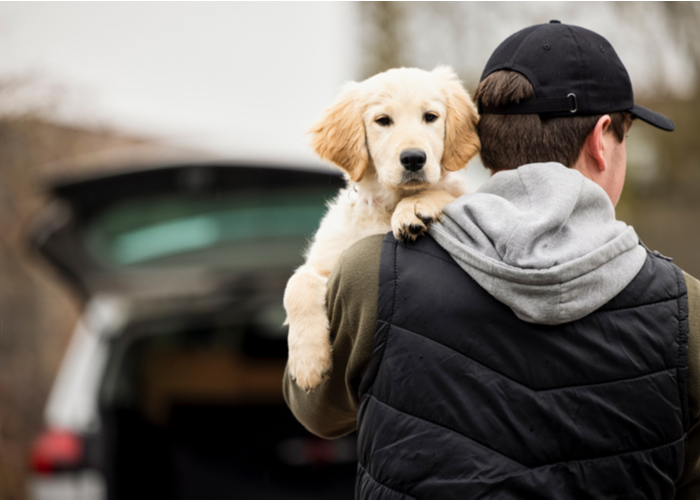
How Prevalent Is Dognapping and Dog Theft?
According to the President and CEO of AKC Reunite (the American Kennel Club’s lost pet recovery service), Tom Sharp, thousands of dogs fall victim to dog theft and dognapping each year, which has increased up to 70% since 2010.
Additionally, of around 2 million domestic animals stolen each year, including Fidos, only 10% have been returned to their owner.
And these figures aren’t going down.
With the rise in demand for puppies during the COVID-19 season and dog prices comes a massive spike in dog theft cases.
In the UK, about seven dogs were stolen per day in 2020. That’s a 170% increase from the previous year.

How Do Dognappers Steal Dogs?
Some dognappers steal dogs by breaking into the owner’s home. But sometimes, they don’t have to do that.
There are things when we often do that may not seem harmless but may actually offer thieves the opportunity to strike as we let our guard down.
For example, you probably love bringing along your canine companion with you when running errands and tie it up in a storefront or leave it for some time in your car.
However, leaving it unattended might make it more vulnerable to devious thieves, especially if they’re the friendly kind.
They can untie or smash your car windows and take your pet away in just a matter of minutes.
And if your dog loves playing outside and your home is accessible or visible to strangers, you also have to keep an eye on it.
Dognappers might use tricks to deceive your lovely pet. And before you knew, it might be gone in your yard.
So, it’s crucial to track your dog’s whereabouts and keep it by your side even if you’re on a walk.
Leaving it off rein-free as you roam around your neighborhood is potentially risky because even if your dog is well-behaved, strangers might lead it astray from you.
What breeds are the most common victims of dognapping?
The most frequently stolen breeds are Yorkshire and Boston terrier, Pomeranian, Maltese, French bulldog, and Chihuahua. Labradoodle, Pitbull terrier, German Shepherd, and Labrador retriever are also prone to dognapping.
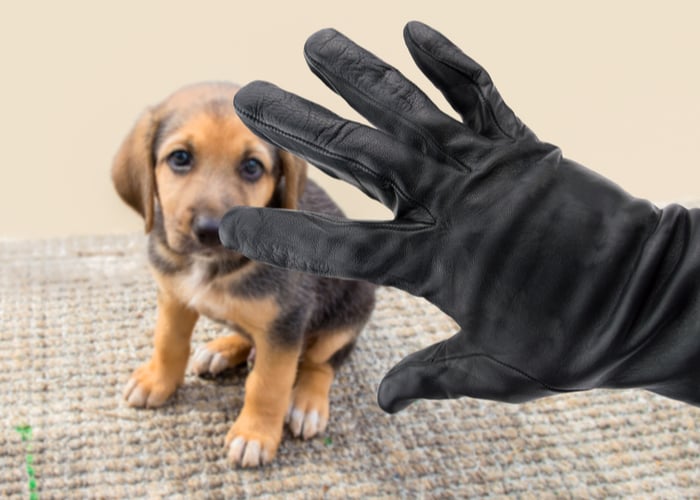
Common Reasons Why Thieves Steal Your Pet
There are several reasons why some people steal dogs, such as the following:
Money
There’s no doubt that money is usually the driving force that pushes thieves to take away other’s pets to earn some bucks. Dogs with high monetary value, like Purebreds, are so attractive for thieves.
They can sell purebreds, toys, puppies, and designer breeds for about $2,000 resale value or half the asking price from legitimate breeders.
Breeding
Some thieves sell and ship their stolen dogs to breeders who may use them for puppy mills.
That’s why getting your pet spayed or neutered is essential. It can deter breeders from taking advantage of your canine.
So, sometimes, letting go of those reproductive organs may be best for your Fido.
Rewards
Fur parents who adore their pets might post rewards for stolen dogs, so cunning dognappers usually steal dogs intentionally and wait for significant rewards.
Dog Fighting
Fighting dogs like German Shepherds, Doberman Pinschers, and the choice of fighting canines, the American Pit Bull Terriers usually get stolen and used as a fighter in illegal dog fighting rings.
And sadly, some people use smaller dogs as “bait dogs” to these bigger breeds.
Research
Others sell the stolen dogs to research and veterinary institutions that use domestic animals like dogs and cats in laboratories for testing and biomedical experimentations.
Meat & Accessories
Some people use the dog’s meat for human consumption, while others use their furs for clothing and accessories.
Laws About Dog Theft and Dognapping
Although most fur parents consider their dogs to be part of their family, most state laws consider pets a personal property of their owner.
So, even if kidnapping in humans is a severe criminal offense, the law does not see dognapping that way.
Some states don’t even have specific laws for stolen pups.
So, dog theft often falls under general theft, and if the dognapper broke into your house to take the dog away, that could be an additional burglary case.
Currently, there are only 15 states in the US that have laws for stolen dogs, including:
- Virginia
- Louisiana
- Oklahoma
- New York
- Mississippi
- California
- Connecticut
- Delaware
- Michigan
- New Hampshire
- North Carolina
- Rhode Island
- Texas
- Washington
- West Virginia
What Are the Legal Penalties for Dog Theft?
Penalties vary from state to state—most states who consider dog theft a misdemeanor charge relatively small fines and little to no jail time.
And those who have pet theft laws impose charges differently. Take these states, for example, and see how the penalties vary:
Virginia
Stealing a dog is a Class 5 felony in this state regardless of its monetary value. And it is punishable by up to 10 years in jail.
Louisiana
In Louisiana, penalties may depend on your dog’s monetary value. Stolen dogs worth more than $500 are punishable by up to 10 years of imprisonment and a $3,000 fine.
Thieves who steal dogs below $500 can also receive a stiff fine and imprisonment sentence but not as extreme as expensive ones.
Oklahoma
Stealing dogs in Oklahoma is also a felony where thieves can face a fine equal to 3 times the amount of the animal they stole.
Additionally, they will be confined in state prison for around six months to 3 years.
New York
In New York, dognappers would pay a fine of $1,000 and face six months imprisonment since dog stealing is a Class E felony, regardless of its monetary value.
Mississippi
Dog theft is also considered a felony in Mississippi and punishable by either a fine of $500 or less or a county jail imprisonment of around six months or both.
California
The California Penal Code Deal states that a person who feloniously steals a dog with a value of more than $950 is guilty of grand theft.
But if its value is less than $950, it would be petty theft.
And those who we will catch stealing an animal intentionally for medical research, sale, slaughter, or commercial use will have to face imprisonment in a county jail in a year or less.
How to Protect your Fido from Dognapping?
Losing a Fido may feel like losing a family member and companion in one. And nobody wants to go through such a painful experience.
So, if you want to keep your dog away from danger, consider the following tips that will help you ensure your dog’s security.
Collect identification and proof of ownership
You’ll need the following things to identify your dog and prove you are its owner in case it gets missing or stolen:
- Microchips are crucial for tracking missing dogs, so it would be best to have your dog microchipped.
- You also need to keep the details on your dog’s collar updated so people could quickly contact you.
- Your dog also has to keep its collar and ID tag with your name, address, and mobile number.
- But having your pet’s name on its collar is a no-no since it can make it easier for thieves to trick them if they know its name.
- Taking clear photos of your canine from different angles and keeping it updated regularly is also necessary for identification.
So, make sure to capture the before and after grooming looks and unique features and take photos with your doggo to prove your ownership.
Beware in public places.
Your dog may catch the attention of the people around you. And while there’s nothing wrong in letting it socialize with others while on a walk, be mindful when a stranger asks too many questions.
Here are other tips you must remember when taking your pup to public space:
- Don’t leave your Fido alone outside stores or inside a car because dognappers can snatch them in just a second.
- Try walking in pair if possible but keep your eyes on your pet.
- Change your walking routes from time to time because thieves may target it after watching it previously.
- Don’t let it be rein-free, especially if you’re in an unfamiliar place. Having a long lead would be better to make sure it can return to you.
- It would be best to save emergency SOS shortcuts in your phone too.
- Having an alarm device that activates during an emergency is also helpful for protection, so having one is a good idea wherever you go.
- You may also utilize GPS pet trackers and fix them into the dog’s harness and collar.
Be cautious in sharing information on social media.
Keeping photos of your adorable pet can help you track if it goes missing. But when you click that camera, it’s surely tempting to post your beloved pup on social media and share it with the world.
But, make sure not to put too much information about your dog because some thieves may look for targets on social media.
Reminders to protect your dog online:
- Avoid showing info like where you live, work and spend most of your time with your pet.
- Tagging specific locations in your posts is also not advisable.
- Make sure to hide or blur out any identification tags when posting your Fido’s photo.
- Be skeptical in answering strangers who ask lots of questions online.
Keep your dog safe at home.
Never let your guard down, even at your home. Here are some tips to deter thieves and burglars:
- Ensure your dog won’t be somewhere out of your sight and don’t leave it unsupervised.
- Front gardens are vulnerable to strangers, so it will be best to lock all the gates to secure your pet.
- You may also install a bell on your entrance to notify you if someone opens it and a CCTV for added security.
Be careful in choosing dog walkers.
There are times where you might not have enough time to accompany your dog on a walk and need assistance from others.
According to RSPA dog welfare expert Dr. Sam Gaines, dog walkers are currently unregulated and unlicensed. Therefore:
- You need to make sure that your chosen walker has complete papers.
- Recruit from reputable companies only to ensure your dog’s safety
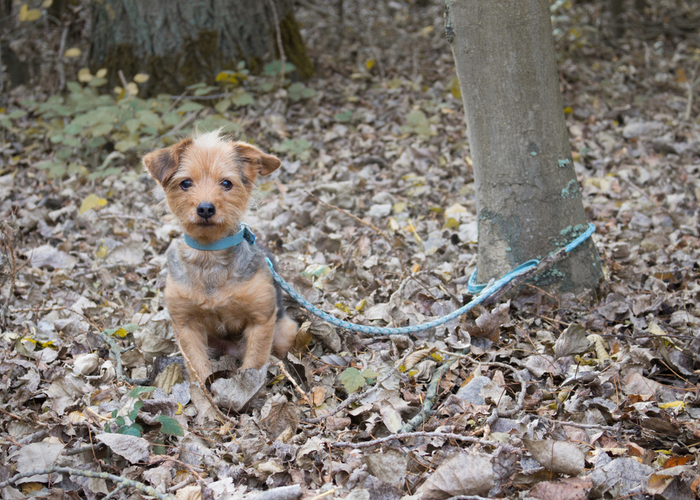
What to Do If Someone Stole Your Dog?
Now, if your dog has sadly fallen victim to the dognapper’s hand despite trying your best to keep it safe, here are things you can do to locate it.
File an official police report
Contact the police and animal control in the area where it was stolen. You may have to be persistent, though, for some local authorities might not take it seriously.
Post its Microchip number
Microchipped dogs with serial numbers would be easier to track, especially if you would post it on National Information Center’s “stolen article” category.
Search its whereabouts
You may have to do the investigative legwork by yourself if the local police won’t prioritize you. So, it can help if you can talk to your trusted people.
Keep an eye on sale ads.
Your missing pup might end up in local for-sale sites, so be sure to check the local message boards and for-sale ads.
Spread flyers
It will be easier to create flyers if you have a recent photo with your pet, so it would be better to have one.
You may include your pet’s name, color, markings, and breed on it to help people identify your Fido.
Detailing where it was last seen and attaching your contact numbers on the flyer can also make it easier for people to contact.
And if your pet has some medical condition, letting people be aware of it through the flyer may encourage them to take action and deter those who want to keep it.
You can post the flyer in post offices, veterinary clinics, local pet stores, and dog parks. You may also share it on social media and local websites if you want more visibility.
Check animal shelters
Some dog flippers leave the animals in an animal shelter, especially if they’ll find out that selling your pup is not as lucrative as they’ve thought.
So, it would help if you could check the nearest animal shelter to you.
Going to places where dog guardians meet also offers an opportunity to spread the word about your dog.
Who knows! Maybe one of them can find your pup.
Get in touch with the media.
Lastly, contact your local TV or radio station or newspaper to create news or post your missing dog on their website.
You may also raise awareness on social media and inform the public about your Fido by posting its recent photos, name, description of appearance, and temperament.
Facebook groups and pages for lost and found dogs and Reddit can also help you find information about your dog’s whereabouts.
Looking for a stolen dog indeed takes time and is costly, not to mention the traumatic feeling of losing a valued companion.
If your stolen dog has no microchip, ID tag on its collar, nor GPS tracker, it can be a lot harder to find it.
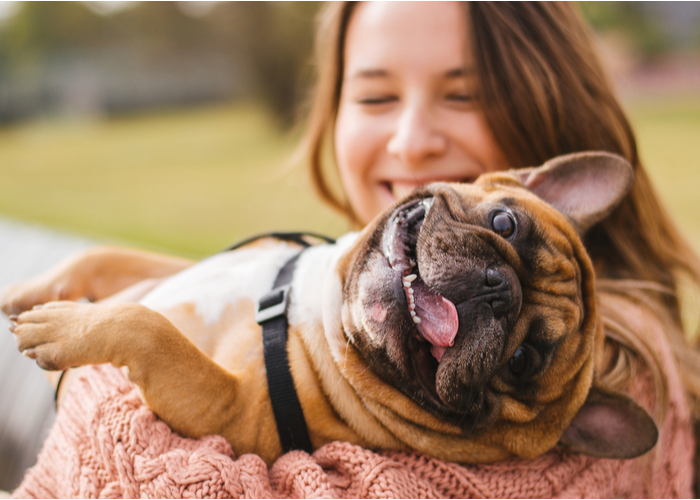
Final Thoughts About Dognapping
During this challenging time, don’t lose hope.
Your dog may have ended up in the hands of kind-hearted people, kind enough to bring it back to you.
Check out this guide from the Humane Society on how to find a missing dog, tips you can do right after you realize your Fido is lost or possibly stolen.
READ NEXT: Don’t Lose Your Dog! Why Our Pets Need Dog ID Tags
